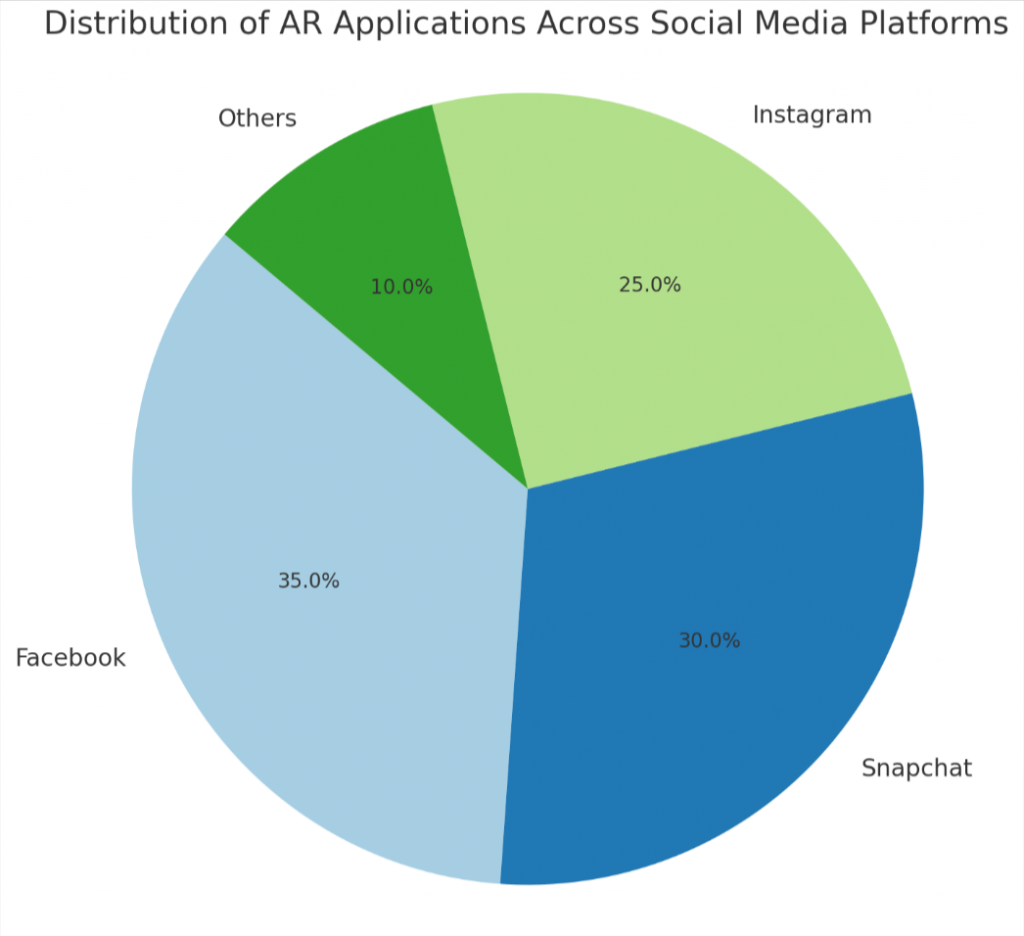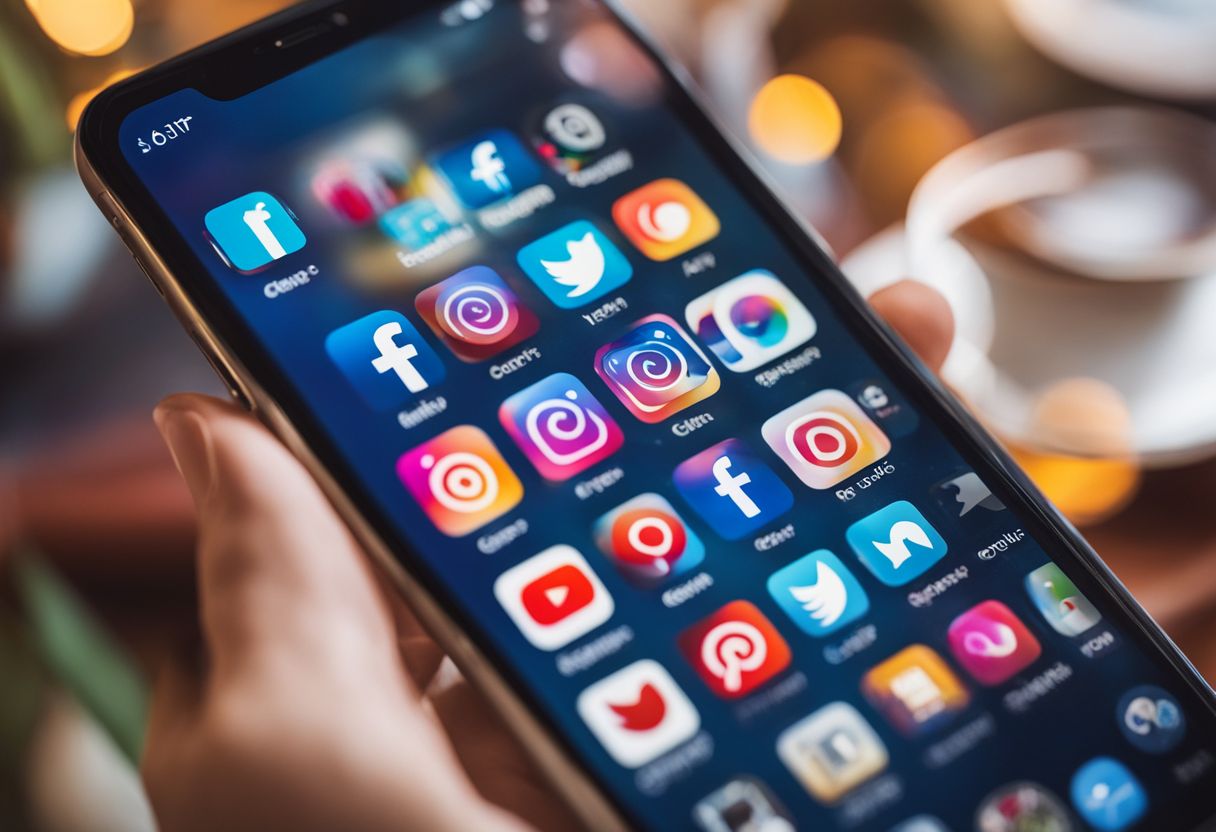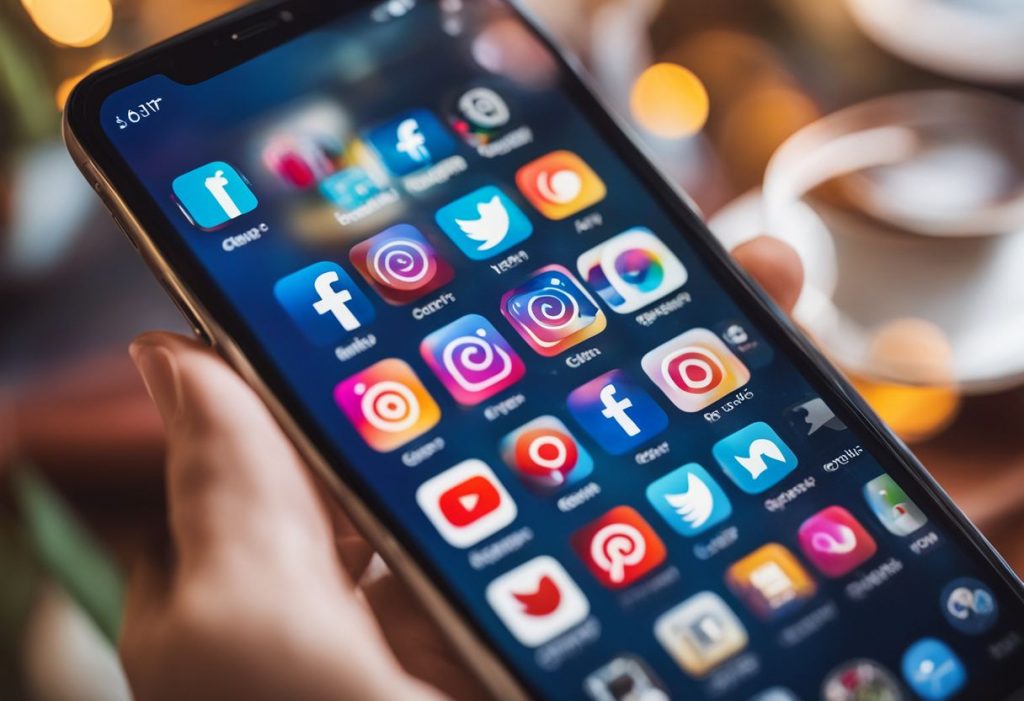Enhancing User Experiences: Augmented Reality’s Impact on Future Social Media
Are you wondering how Augmented Reality (AR) will transform your social media interactions soon? AR is not just a gaming trend; it has already begun to revolutionize popular platforms like Facebook, Snapchat, and Instagram.
In this article, we’ll delve into the intersection of AR and social media, shedding light on how exciting features will make our experiences more interactive and immersive. Ready to peek into the future of social connectivity?.
Key Takeaways
- Augmented Reality (AR) enhances social media by offering interactive and unique content through platforms like Snapchat, Instagram, and Facebook.
- AR on social media enables speedy purchasing decisions by allowing users to virtually try on products and shop from the comfort of their own homes.
- AR technology enhances user experiences on social media by overlaying virtual elements onto the real world, providing immersive and engaging interactions.
Understanding Augmented Reality
Augmented Reality, commonly known as AR, is a fascinating technology that seamlessly blends digital elements into our real world. It achieves this blending by projecting virtual augmentations onto our surrounding environment, giving us an enhanced and interactive experience.
Snapchat’s AR filters and lenses are prime examples of the practical application of AR technology in social media.
This transformative technology has enormous potential to revolutionize various sectors beyond just entertainment. It’s noteworthy how it’s making significant disruptions in industries such as healthcare, education, navigation, manufacturing, and marketing.
One can vividly see its influence on these fields through applications like live events, AR videos or 3D Bitmoji – all utilizing this innovative tech marvel to provide users with unique experiences.
The Relationship between Augmented Reality and Social Media
Augmented reality is steadily transforming the way we interact with social media. Instagram, Facebook, and Snapchat are pioneering this change by integrating AR into their platforms.
Snapchat dazzles its users with fun AR filters, lenses, games and even a shoppable AR feature for seamless online purchases. Meanwhile, giants like Instagram and Facebook are not far behind in leveraging AR to revamp user experiences on their platforms.
Brands now have innovative ways to reach out to consumers; they advertise using interactive digital layers that showcase products in a real-world context through users’ phone screens.
The ability to digitally try out or test products using augmented reality before making purchasing decisions magnetizes potential buyers on these social platforms towards brands – all without stepping foot into physical stores!
The Future of Augmented Reality in Social Media
The future of augmented reality in social media holds the promise of interactive, unique content, speedy purchasing decisions, and enhanced user experiences. Discover how brands are leveraging AR on social media and the implications it has for social media marketing.
Read more to explore the exciting possibilities of AR in shaping the future of social media.
Interactive, unique content
Augmented Reality (AR) breathes life into social media by offering interactive, unique content. Brands can now create user-generated content using branded AR filters and lenses on platforms such as Snapchat, Instagram, and Facebook.
The most engaging use of AR is seen in the creation of immersive 3D experiences that audiences can participate in directly from their phone screens. Users are not just viewing digital marketing efforts – they become a part of them! For instance, brands like Timberland and Sephora have leveraged this tool to develop compelling product try-ons for a more personalized customer experience.
Inevitably, such innovative technology integration keeps tech-savvy millennials and Gen-Z audience hooked to these digital platforms resulting in increased brand awareness and conversion rates.
Speedy purchasing decisions
Augmented reality on social media fosters speedy purchasing decisions. Virtual stores enable consumers to shop from the comfort of their homes, creating a hassle-free shopping experience without having to physically visit a store.
Imagine lounging at home and being able to virtually attend live events or product releases through AR technology – you can buy products as soon as they are released without waiting in lines or travelling long distances.
This immediacy prompts faster buying decisions, benefiting both brands and consumers alike by eliminating geographical boundaries and time constraints. Furthermore, engaging AR experiences often generate word-of-mouth marketing due to their shareable nature, potentially influencing other users’ quick purchasing actions and increasing brand awareness simultaneously.
Enhanced user experiences
AR technology has the incredible ability to enhance user experiences on social media platforms. By overlaying virtual, computer-generated augmentations onto the real world, AR provides users with interactive and engaging content.
This allows them to not only view but also interact with products or services in a whole new way. With AR filters and lenses, users can try on virtual makeup, accessories, or even clothing items before making a purchase.
Additionally, brands can create immersive experiences through AR camera effects that allow users to play games or participate in interactive challenges. These unique and personalized experiences provide users with a deeper connection to brands and products while also increasing engagement levels on social media.
How Brands are Leveraging Augmented Reality on Social Media
Brands are leveraging augmented reality on social media in several ways:
- Implementing AR filters, lenses, games, and Shoppable AR features on platforms like Snapchat, Instagram, and Facebook.
- Creating interactive content that engages tech-savvy millennials and the Gen-Z audience.
- Utilizing AR to enhance the user experience and provide unique digital features.
- Promoting products or services through compelling AR campaigns and advertisements on social media platforms.
- Enabling consumers to make purchasing decisions by offering virtual stores with AR product try – ons.
The Implications of Augmented Reality for Social Media Marketing

AR technology has immense implications for social media marketing. Brands and marketers now have the opportunity to create interactive and unique content that captures the attention of tech-savvy millennials and the Gen-Z audience.
With AR filters, lenses, and effects, social media campaigns can stand out from the competition and provide an immersive experience for users. This leads to increased engagement and ultimately drives conversion rates.
Furthermore, AR allows brands to showcase their products in a whole new way, enabling customers to try on virtual clothing or visualize furniture in their own homes. By integrating AR into social media platforms, brands can create compelling content that influences purchasing decisions and encourages impulsive buying behavior.
As AR technology continues to evolve, it will undoubtedly play a crucial role in shaping the future of social media marketing.
Conclusion
Augmented reality (AR) is revolutionizing social media by enhancing user experiences and providing interactive content. As AR technology continues to evolve, it will play a significant role in industries such as healthcare, education, navigation, manufacturing, and marketing.
Brands and marketers can leverage AR on social media platforms to promote their products or services in innovative ways. The future of social media with augmented reality is exciting and promises endless possibilities for engagement and unique content.

